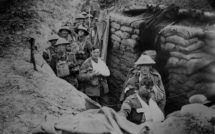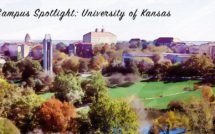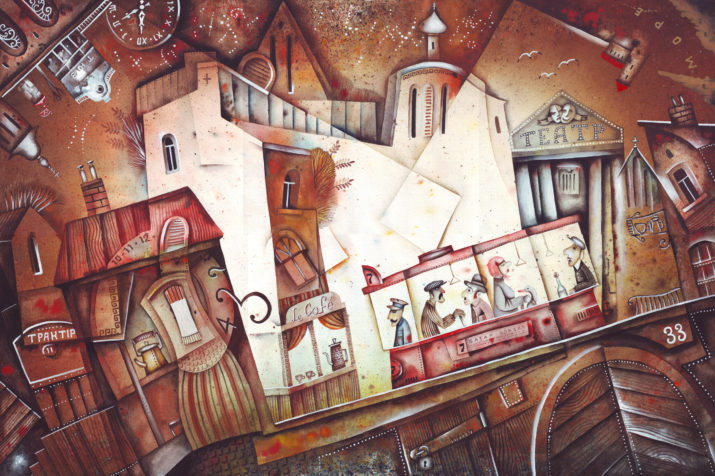
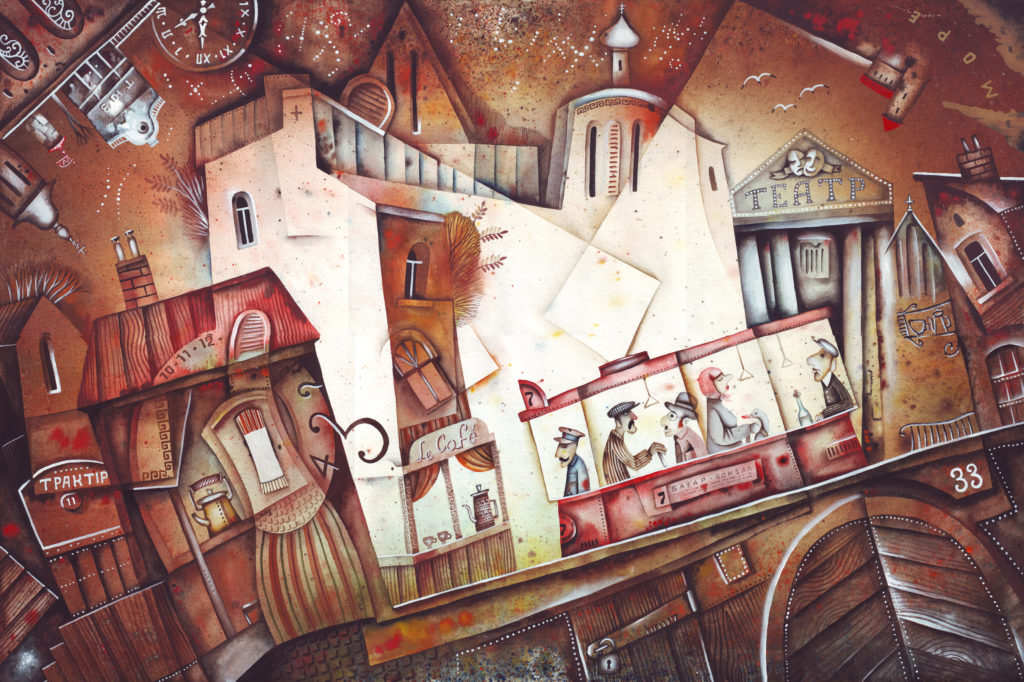
This is part of our special feature Memory and the Politics of the Past: New Research and Innovation.
The territories of the former Soviet Union have been described by many commentators as sites of conflicting and uneven memories. Michael Rothberg identifies this area as one of the “hottest” zones of memory conflict, where “multiple legacies of extreme violence coexist in explosive constellations.”[i] Indeed, the memory of World War II, the Holocaust, the Soviet repressions, and deportations have been the subject of explosive memory events and conflicting memorialization in the region, propelled by the often diverging considerations of historical injustice, rehabilitation of victims of terror, claims for symbolic recognition, and territory. This has created an intensely entangled memory space where particular interpretations of the past in one country generate heated responses within others. As the post-Soviet space demonstrates, we have entered an era in which processes of remembering are not confined to the space of the nation, but take place across and beyond borders, generating new and complex mnemonic constellations. These transnational dynamics have usually been studied in relation to political debates, online forums, and media products like films and journalism. However, with the focus on the spectacular, ordinary instances of the production and circulation of memory in transnational space have been largely overlooked. International tourism is one such non-spectacular ordinary arena for encountering the past of others, which has largely escaped the scrutiny of researchers working in the post-socialist region. Viewed as entertainment and as part of the commodification of the past, cultural memories in tourism are often dismissed as trivial and therefore not relevant for political analysis.
The large and ever increasing numbers of tourists visiting other countries signals the growing significance of tourism as a site for transnational memory encounters. Researchers working on areas like Lebanon, Northern Ireland, and Israel-Palestine have shown the political implications of tourism for identity constructions and its use as a tool for politicization, and in some instances, its part in fueling sectarian conflicts. In Northern Ireland, for example, the commodification of conflict heritage like military installations, insurgent memories, and murals has been used to propagate particular political views, and resulted in an exacerbation of conflict.[ii] Other researchers have investigated instances of “hopeful tourism,” where alternative identities and ways of remembering the past based on empathy and solidarity are practiced as in the case of hostile borders into tourist destinations.[iii]
Investigating the dynamics of memory produced and circulated in the field of tourism clearly emerges as an important site of study: how are shared historical sites and experiences represented to tourists in situations when they have become subject to contestation? Does tourism’s seemingly “apolitical” nature provide the potential for the formation of alternative non-conflicting memories about the past?
In summer 2016, supported by a grant from Loughborough University, my colleague Emily Keightley and I conducted a pilot study on cultural memory encounters in Russian tourism to Tallinn, Estonia against the background of conflicting interpretations of the past between Russia and Estonia. Russian tourists constitute the second largest group of international tourists traveling to Estonia (8 percent). While numbers have been negatively affected by the falling value of the ruble, over 110,000 tourists from Russia visited the city of Tallinn in 2015.[iv] How is heritage presented to these tourists and what kind of encounters are generated when they visit the city?
Writing on heritage in post-socialist cities has emphasized the rewriting of the past and heritage in post-socialist cities after the fall of the Iron Curtain. As new monuments were erected and old ones dismantled, streets renamed and heritage revalued, new narratives on collective identity and memory were constructed.[v] Tourism was viewed as an arena to communicate these new identities to an external audience and achieve validation, even though the expectations of tourists could at times clash with the identity narratives put forward by the host countries.[vi] Traveling to Tallinn today, we can see the privileging of particular national and European memories and identity narratives within tourism brochures and webpages. Tallinn’s main attraction is certainly the picturesque old town with its gothic churches, narrow lanes, market squares, and impressive city walls, through which during the main tourist season a couple of thousand tourists are navigated simultaneously by tour guides. Together, with new monuments like the Independence War Victory column, commemorating the Estonian war of independence in 1918-1920, this heritage works to signal the city’s national identity and European outlook. More recently, however, the presentation of heritage has been broadened. The industrial heritage in the Rottermani quarter, the Seaplane Harbour, as well as the Patarei prison has been rediscovered.[vii] The Kadriorg Park, erected by Peter the Great, is already now a well-visited tourist destination, and the Soviet-era Linnahall, a monumental sports and concert venue by the sea has been identified as a strategic investment site for the future. The reasons for this pluralistic approach are twofold: twenty-five years after the regaining of national independence has resulted in a greater confidence and the need to tell a particular story about the past is less urgent. According to Riin Alatalu, an expert on Estonian heritage at the ministry of culture, the debate in Estonia has moved on significantly in the past ten years and heritage protection is characterized by a greater openness towards different periods and layers of history: people are now more open with regards to the preservation of Soviet heritage and there is a less political view of the buildings.
Alongside this pluralist approach to heritage preservation, the economic orientation of the tourism industry is another crucial factor. Tourism is a key sector in the local development plan and “improving the quality of tourism projects and services, creating new products and active marketing”[viii] are said to be crucial for the creation of economic growth and the development of a service economy. While medieval Tallinn is a key attraction, a diversification of the tourism program, emphasizing sites of communist and imperial Russian heritage, food culture, and a diverse set of leisure activities improves the offer for tourists and helps Tallinn defend its position in a competitive market. The emphasis thus lies on acknowledging the value of different heritages and offering high quality services rather than specific identity narratives. As Silja Veerma from Tallinn Tourist Information told me, the main objective is that tourists have a good time, are provided with the information and services that they need, and that they get a positive, friendly impression of the city so that they possibly come back. In this context, Russian tourists are seen as welcome visitors to the city, providing an important source of revenue. Tourism professionals have developed a careful marketing strategy aimed at creating a welcoming and diverse image of the city.
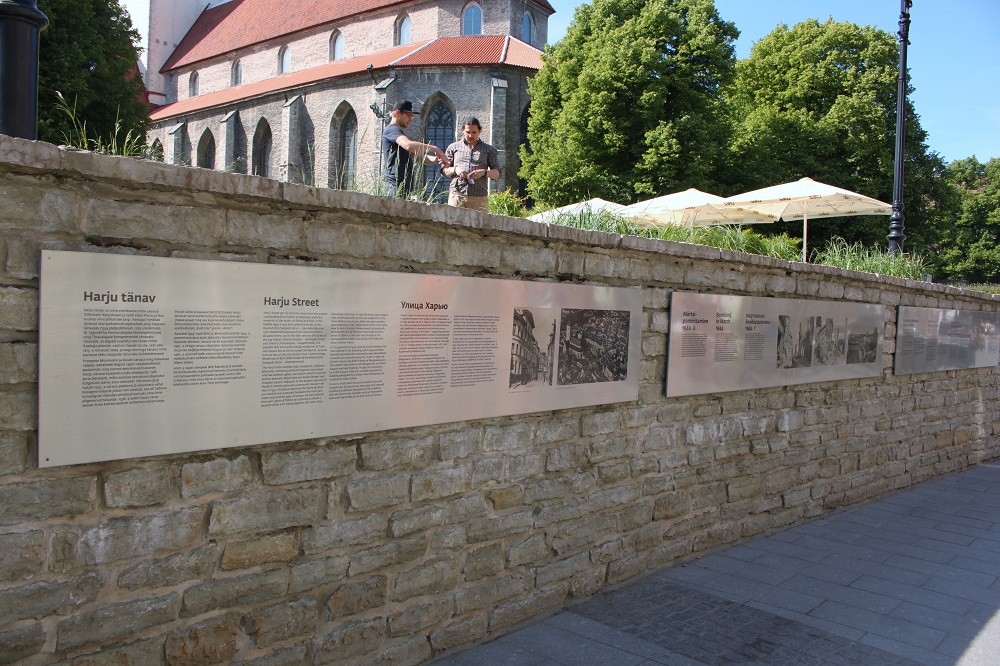
This indicates that tourism largely works as a sphere separate from politics, driven by a service orientation and the desire to meet tourists’ expectations. When Russians visit Tallinn, they come to visit friends, go shopping, or enjoy the picturesque facades, winding streets and European outlook of the center. Those who visited the Kadriorg palace, the palace built Peter the Great also mentioned the pleasure of seeing something familiar in Tallinn. However, tourism is not unaffected by the present political climate as anxieties of Russians expressed in blogs, negative reviews on Tripadvisor demonstrate.
To better understand the dynamics and potentials of the touristic encounters, we participated in guided tours and undertook interviews with guides. We found that within these transnational encounters between guides and tourists, tour guides are regularly confronted with the question if and how to remember the shared historical experiences, which have become the subject of memory conflicts. Tour guides are aware that the World War II and the Soviet period are sensitive issues and that “people grew up in different narratives, hearing different stories of history” (Interview with Anton, June 2016). As most of the tour guides in Tallinn offering tours for Russian tourists belong to the local Russian-speaking minority, they are themselves uniquely positioned to navigate the contested terrain of the past and mediate between guests and hosts. While some tour guides choose not to mention World War II and the Soviet period to avoid conflict, others adopt particular discursive strategies when talking about the past: One strategy commonly adopted by tour guides is to choose neutral expressions and emphasize factuality, staying away from interpretation and contextualization’s that may be contested. As one tour guide stated: “I keep things very local and very clear. These people came – and they did this. Another lot came – and they did that. A third lot – and this is what they did. Times are different nowadays – I also tell them that. I try to dot the “I’s” immediately.” (Interview with Natalja, June 2016) In particular, the bombings of Tallinn in World War II by Soviet aircraft and the view of the Soviet regime as occupation were regularly mentioned hot issues. Whereas the notion of occupation that Estonians use to describe the Soviet period emphasizes the illegality of the Soviet regime and the suffering experienced by the Estonian population, the Russian narrative sees Russians as good colonizers in the region, bringing economic progress and Soviet modernity after World War II. Working with Russian tourists, tour guides try to avoid the term “occupation” and adjust the framing to reach an interpretative compromise, saying for example that Estonia’s annexation was “almost voluntary.” While these discursive strategies serve to minimize the potential for conflict and are in line with the service orientation of the sector, in several instances the guided tour allowed for a more productive engagement with the other’s past. Russian tourists coming to Tallinn used the guided tour to ask questions and also instances of conflict that occurred despite the adjustments made by tour guides created the possibility of a dialogue about the past.
One of the tour guides, for example, described that “Russians like to (ask) provocative questions. For example, I explained to the last couple I worked with that we were part of different countries, and of course they know that in Estonia we call it occupation even though I personally did not use the word. They were like: ‘Why don’t you call what is happening now with European Union occupation? Why don’t you say they’re occupying now?’ And you have to explain without being rude and without being just ‘yes, yes, you’re right.’ I explain the view of local people. Something like this requires a lot of effort. Whatever the question is, you don’t make it personal.” (Interview with Anna, June 2016). Such moments of confrontation are difficult for tour guides to navigate, however they create the possibility to explaining Estonian narratives and thus present unfamiliar points of views to tourists. In other instances, tour guides try to detach the present day identities and relations between Russians and Estonians from the past. One tour guide used a confrontation over the bombing of Tallinn by Soviet aircraft to compare World War II to earlier wars in the region, and to argue that war-time destruction shouldn’t offend Russians today. Although tour guides largely try to avoid such confrontations, these encounters signal the possibility for a limited dialogue about the past within tourism. Different from explicit declarations of solidarity and empathy, they indicate that concrete encounters with the others’ past can stimulate exchanges that go beyond the polarization we find in the media and political discourse.
The headlines on Russian-Estonian relation have been dominated by conflict and an increasing securitization, reflected in the recent arrival of new NATO battalions in Estonia in mid-March. Our findings show that despite the political conflicts and the falling value of the ruble, Russians continue to travel to Estonia as tourists, seeking pleasure, possibilities for consumption, entertainment, and even knowledge about the other. In the tourism industry, Russians, Estonians, and the local Russian minority can encounter each other as guests and hosts. While we shouldn’t overestimate the transformative nature of largely commerce-driven exchanges, our research shows that tourism holds potential for positive experiences and exchanges with the other, including the possibility to engage in a dialogue about the shared past.
Alena Pfoser is Lecturer in Communication and Media Studies at Loughborough University, UK. Prior to joining Loughborough, she was a Marie Curie Fellow at the Leibniz Institute for Regional Geography in Leipzig, Germany. Alena’s research focuses on social and cultural memory and nation-building processes, using ethnographic and narrative methods. Alena has a long standing interest in the post-Soviet space. Her PhD thesis looked at the transformation of the Russian-Estonian border from an integrated space to an international and EU external border. She has recently started to explore cultural memories and tourism in post-Soviet cities.
Photo: Vintage Tram, Eugene Ivanov | Shutterstock
Photo: Memorial plaques, marking the Soviet bombardment of Tallinn in World War II, Private
References:
[i] Moses, A Dirk, and Michael Rothberg. “A dialogue on the ethics and politics of transcultural memory” In Bond, Lucy, and Jessica Rapson (eds) The transcultural turn interrogating memory between and beyond borders. Berlin: de Gruyter, 2014, 32.
[ii] McDowell, Sara. “Selling conflict heritage through tourism in peacetime Northern Ireland: transforming conflict or exacerbating difference?” International Journal of Heritage Studies 14.5 (2008): 405-421.
[iii] Gelbman, Alon, and Dallen J. Timothy “From hostile boundaries to tourist attractions.” Current Issues in Tourism 13.3 (2010): 239-259.
[iv] Tallinn City Tourist Office & Convention Bureau. Overview of Tourism Trends in Tallinn in 2015. Tallinn, 2016.
[v] For example Verdery, Catherine. The Political Lives of Dead Bodies. Reburial and Post-Socialist Change. NY: Columbia University, 1999. Müller, Jan-Werner (ed) Memory & Power in Post-War Europe: Studies in the Presence of the
Past. Cambridge: Cambridge University Press, 2002.
[vi] Light, Duncan. “Gazing on communism: heritage tourism and post-communist identities in Germany, Hungary and Romania.” Tourism Geographies 2.2 (2000): 157-176.
[vii] Estonian Institute. Estonian Heritage. Tallinn, 2014.
[viii] Tallinn Development Plan 2014-2020. Tallinn, 2013, p.16-17.
Published on April 4, 2017.

